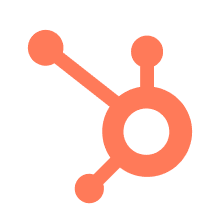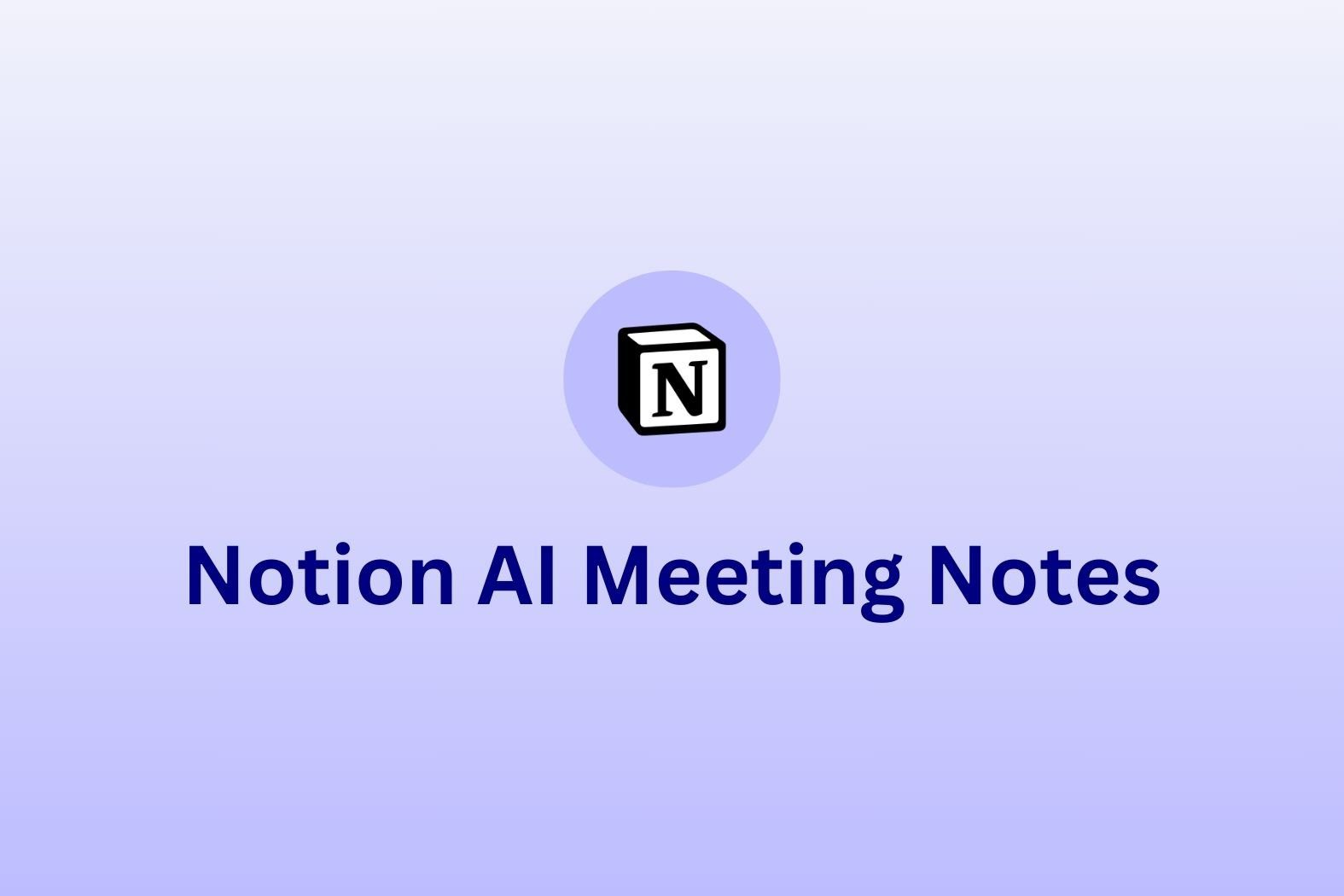Figuring out how to choose an AI meeting note taker can be surprisingly overwhelming. There are so many tools out there, each claiming to be smarter, faster, or more accurate than the next. But most people don’t need a flashy demo, they need something that actually works.
I’ve spent the past few years working with these tools across all kinds of meetings: client calls, team check-ins, interviews, strategy sessions, and more. As a B2B content writer with a background in journalism, sales, and marketing (both in-office and remote), I’ve taken more notes than I care to count. I know what makes a note useful, and I’ve tested most of the tools that claim to do it for you.
This guide breaks down what actually matters when picking a tool, based on real-world experience, not just feature lists.
Table of Contents
TL;DR: How to Choose an AI Meeting Note Taker (Based on Real Use)
If you just want the key takeaways, here’s what I’ve learned after years of testing these tools:
- Be clear on your use case: transcripts, summaries, sharing, or search
- Make sure it works with your actual meeting setup (Zoom, Google Meet, Teams)
- Accuracy matters more than anything, especially with accents or messy audio
- You need proper search, not just a transcript you have to dig through
- Free plans vary wildly, so check what’s included and what gets locked behind a paywall
- If you’re in the UK or EU, make GDPR compliance non-negotiable
- Watch for bias in sentiment or summaries, particularly across cultures and roles
- Good looks different for everyone, so choose what fits your day-to-day, not just a feature list
In my experience, the best tools are the ones that quietly save you time without creating more work.
Start With Why You Actually Need It
Before you get caught up in features or pricing, take a step back. The first step in figuring out how to choose an AI meeting note taker is understanding your specific use case.
Maybe you’re running your own business and need reliable transcripts so you can focus during calls instead of scribbling notes. You might be part of a growing team that needs clear summaries and a way to keep track of decisions. Or you could be managing interviews, workshops, or client sessions where pulling out quotes quickly is essential.
I didn’t always need much. In the beginning, I just wanted a simple record of what was said. Over time, my needs changed. I needed highlights I could send to clients. Then I wanted searchable archives so I wasn’t digging through old Google Docs and audio files. What you need now might be basic, but it’s worth thinking ahead as well.
Choosing the right tool starts with working out and being clear on what problem you’re trying to solve. Everything else builds from there.

Accuracy Isn’t Optional
At its core, a meeting note taker needs to get the words right. If it can’t do that, nothing else really matters.
I’ve used tools that produced spotless transcripts, even when the audio quality wasn’t great. I’ve also seen ones that turned a clear conversation into a total mess. If I have to read a transcript three times just to figure out what someone actually said, it’s not saving me time. It’s making me work twice.
Accuracy isn’t just about spelling. It includes punctuation, speaker labels, and how the tool handles filler words or awkward pauses. Some tools clean things up nicely without losing meaning. Others are so literal that they include every “um” and half-formed sentence, which quickly becomes unreadable.
In UK journalism circles, Otter is almost a running joke. It’s been known to completely crumble when faced with regional accents, especially anything from Liverpool. I’ve seen it turn interviews into full-blown memes. It just doesn’t cope well with variation in tone, dialect, or crosstalk.
If your calls involve strong accents, multiple speakers, or background noise, test the tool properly. The best ones handle real-life conversations, not just scripted audio in perfect conditions.
The key takeaway here is simple: who will you actually be speaking to?

Does the AI Meeting Note Taker Work With Your Setup?
Before you fall in love with a tool’s features, check whether it actually works with how you run your meetings.
Most AI note takers integrate with common platforms, but not all of them do it well. Some only work with Zoom. Others need a Chrome extension running in the background. A few require you to upload recordings manually, which kind of defeats the point.
I tested a tool recently that had a lot going for it, sharp transcripts, a clean interface, and genuinely useful tagging. I was curious to see how it compared to tl;dv, which I’ve used for a long time obviously. But then I realized it only supported Zoom. And I use Google Meet for nearly everything. That ruled it out completely.
Here are a few common integrations to check for:
- Zoom
- Google Meet
- Microsoft Teams
- Google Calendar or Outlook Calendar
- Slack
- Zapier
- Notion or project management tools
The smoother the integration, the better. A good AI note taker should slot into your setup and just work. No fuss. No friction.
Does the AI Meeting Note Taker Handle Summaries, Highlights, and Action Items Well?
A good AI note taker should do more than just repeat what was said. Smart summaries, clear highlights, and action items are where things start to become genuinely useful.
The question is, who decides what matters? You, or the AI? Some tools get it right. They identify themes, spot decisions, and highlight tasks without overwhelming you with repetition. Others just repackage the transcript and label it a summary. That’s not useful. It’s just noise.
As someone who’s worked in sales, journalism, marketing, and content, I’ve seen how different teams need different things from a meeting. What stands out to me as a marketer might feel irrelevant to someone in product or customer success. Some tools struggle with that. You install them and realize the entire thing feels built for a sales pipeline, with no thought for other roles. Customer success gets left behind. Strategy calls feel flat. No one knows who the summary is really for.
There’s also the cultural side. Being British, I notice when a tool completely misses nuance or tone. American-centric phrasing, overly enthusiastic bullet points, or action items that no one actually agreed to. It’s subtle, but when you work internationally, you notice fast. I work with people all over the world, and that’s something tl;dv really gets right. It doesn’t try to impose a one-size-fits-all style on every conversation.
So before you get wowed by a flashy demo, ask yourself: does this tool understand how you and your team actually speak, think, and work? Or is it just pushing someone else’s version of what a good meeting looks like?
Here’s what a genuinely helpful summary should include:
- Key decisions made during the call
- Next steps or action items, ideally assigned to someone
- Main topics or themes covered, without rewriting the whole transcript
- Useful highlights, not just repeated sentences
- Tone-appropriate language that matches how your team communicates
If it’s missing those, it’s probably not as smart as it claims to be.
Privacy, Security, and Compliance for Your AI Meeting Note Taker (Especially in the UK/EU)
This is a massive bee in my bonnet. I’ve had to reject otherwise excellent tools based purely on their privacy policies (or lack of them). If you’re in the UK or EU, you can’t afford to skip this part.
Plenty of US-based tools acknowledge that GDPR exists, but dig into the small print and it’s often vague or incomplete. Data might be stored across regions, accessed by third parties, or used to train models unless you specifically opt out. And many people won’t even realize that’s happening in the background.

Then there’s sentiment analysis.
It sounds smart: tracking tone, mood, and emotional signals. But in practice, it can feel wildly off. I’ve seen tools flag neutral British responses as negative, or misread quiet professionalism as disinterest. What someone says is only half the story. How they say it is deeply cultural, and often misinterpreted by models trained primarily on US-style speech patterns.
In our team, we work across time zones and cultures, including regular collaboration with colleagues in places such as Brazil, Japan, Canada, and even more places. What’s considered clear and respectful in one culture can be labeled “flat” or “cold” in another. The risk here isn’t just inaccuracy. It’s that we start reducing people to fixed emotional categories they never chose. Even if a tool claims to factor in regional norms, it can still feel like a simplified version of someone’s personality is being broadcast without context, and without consent.
I’ll be the first to admit I have my own lens. My background is in sales and marketing, so I naturally pick up on energy and persuasion. But I also know that not everyone communicates that way. Tools that assume there’s one “right” way to sound in a meeting risk misrepresenting the people using them.
And that’s before you even get to the core issue: security. If you’re sharing sensitive conversations, handling client calls, or storing transcripts long-term, the tech needs to be airtight.
Here’s what to look for as a baseline:
- GDPR-compliant storage
- EU-based data centers
- End-to-end encryption (at rest and in transit)
- Customizable data retention
- Role-based access control
If a tool can’t give you straight answers on where your data is stored, who can see it, or how it handles analysis, that’s not a gray area. That’s a no.
Search and Retrieval Shouldn’t Be a Nightmare in Your AI Meeting Note Taker
Plenty of tools can record a meeting. The real test is how fast you can pull out the useful bit afterward.
If I can’t find a key decision from last month’s call in under ten seconds, the tool isn’t doing its job. You shouldn’t have to scroll through a wall of transcript just to work out what someone said, or whether they said it at all.
Search should be quick, flexible, and built around how you think. Look for tools that offer:
- Keyword and speaker search
- Topic tagging or clustering
- Exportable highlights and quotes
- Filters by date, participant, or meeting title
It also helps if the tool understands meaning, not just words. If your brain works in concepts rather than exact phrases, Ctrl+F won’t get you very far. And let’s not forget transcription errors. If you’ve ever confidently belted out the wrong song lyric, you’ll understand how “misheard meetings” can lead to some awkward moments. A smart tool makes those easier to catch and fix.
One thing I love about tl;dv is how its meeting library works almost like Google. You can search across all your past recordings by topic, keyword, or name and jump straight to the right moment. It’s a small feature that saves a huge amount of time.
You shouldn’t have to decode your own conversations. The right tool makes it easy to jump straight to what matters.

Free Plan vs Paid — What Are You Actually Getting?
Plenty of AI note takers claim to be free, but “free” doesn’t always mean what you think it does.
Some offer a true freemium setup. That means full features, no time limits, just upgrade if you need more storage or team access. Others are free trials in disguise, where you enter your details, get access for a week, and then hit a hard stop. Some give you full access but cap your recording minutes. Others hold back basic functionality like exporting or video playback.
Full disclosure: tl;dv offers a free forever plan, which includes unlimited recordings, transcription, and note-taking. You don’t get access to every feature. Things like advanced analytics, admin controls, or certain integrations are reserved for paid tiers, but the core experience is genuinely usable. It’s also super easy to upgrade and scale up as you need, without having to lock in for 3 years like other sales-based tools.
Compare that to Fireflies, which is also free to start, but you won’t get the video recording unless you upgrade. You’re essentially working with the transcript only. And Fathom offers summaries on its free plan, but lacks the deeper organizational features and flexibility you might need if you’re managing multiple projects or teams.
I’ve been caught out by this before. A free plan sounds generous until the one feature you actually need is the one that’s blocked. That’s why I usually test paid versions upfront, not because I want every feature right away, but because I want to see how the tool actually handles real-world use.
If you’re looking for long-term value, aim for a freemium model that lets you grow into it. Something that works well from day one, without locking the basics behind a paywall.
What Does “Good” Look Like in an AI Meeting Note Taker?
Not every AI meeting note taker will suit every person, and that’s exactly the point. Before you commit to anything, ask what “good” actually means for you.
Do you prefer something minimal that just captures the essentials and stays out of the way?
Or do you want a more feature-rich platform with search, tagging, highlights, integrations, and analytics?
Are you using it solo, or are you sharing notes with a team or clients?
Do you need it for daily standups, weekly check-ins, or just the occasional strategy call?
It’s SO easy to get caught up in flashy features, but most of the time, the best tool is the one you barely have to think about. The one that quietly makes your day run smoother.
For me, a good AI meeting assistant doesn’t just transcribe. It actively earns back my time. It helps me stay organized, loop in collaborators, and move on to the next thing without digging through folders. That’s my standard. Yours might look different, and that’s exactly why it’s worth figuring out before you dive in.
Cheat Sheet: How to Choose an AI Meeting Note Taker
Not all tools are created equal. Before you dive in, keep these key questions in mind:
- What do I actually need this for: transcripts, summaries, sharing, or search?
- Will it work with how I already run meetings (Zoom, Meet, Teams)?
- Can it handle real-world conversations: accents, crosstalk, background noise?
- Does the search function actually help me find things quickly?
- Is the free plan actually usable, or is it just a hook?
- Will it respect privacy and regional compliance, especially GDPR?
- Do the summaries feel accurate, or do they miss tone and context?
- Does it work for my role and communication style, not just someone else’s?
Test for what you need, not what the landing page tells you to want.
If you’re after a tool that covers the essentials without making you jump through hoops, tl;dv is a solid place to start.
I do work with them, full transparency, but even speaking objectively, it’s the one I would have stuck with anyway. It’s genuinely free to use, works smoothly with real-world meetings, and handles search, summaries, and nuance better than most.
I’ve tested a lot of these tools. tl;dv is the one I come back to, not out of obligation, but because it actually works the way I need it to.
FAQs About How to Choose An AI Meeting Note Taker
What is the most important feature in an AI meeting note taker?
For most people, it’s accuracy. A tool that can’t transcribe clearly or identify speakers properly is more hassle than help. After that, look for smart summaries, easy search, and reliable integrations with your meeting platform.
Are free AI meeting assistants worth using?
Can AI note takers be used for interviews or research?
Yes, some tools are great for that. Look for speaker separation, tagging, and the ability to export highlights or quotes. If you’re working with sensitive data, double-check privacy policies.
What’s the best AI meeting note taker for small teams?
How do I test an AI meeting note taker without wasting time?
Book a couple of low-stakes meetings (internal catchups, solo recordings, etc.), run the tool, then ask yourself:
- Was it easy to use?
- Did I trust the output?
- Would I actually refer back to these notes?
That’s usually enough to tell if it fits your flow.
Also, if you want to save even more time, try to add one or two to a single meeting. While it’s not ideal for customer-facing experience, you can literally compare the tools side-by-side.





